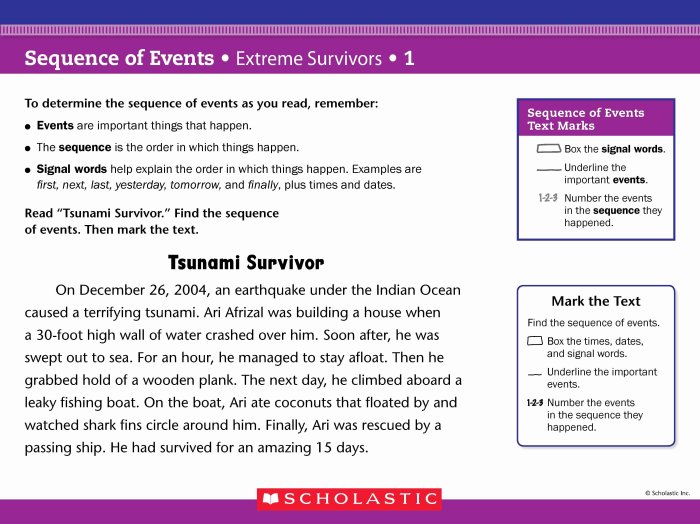Digging deeper enso worksheet answers – Delving into the depths of the ENSO worksheet answers, this comprehensive guide unveils the intricacies of the El Niño-Southern Oscillation (ENSO) phenomenon, empowering readers with a profound understanding of its global impacts and practical applications.
The ENSO worksheet serves as a valuable tool for exploring the complexities of ENSO, guiding users through the analysis of data, interpretation of patterns, and application of knowledge to real-world scenarios. By deciphering the worksheet’s content, individuals gain a deeper appreciation of the dynamic relationship between the ocean and atmosphere, shaping climate variability and influencing diverse sectors worldwide.
Digging Deeper into ENSO Worksheet Overview

The ENSO (El Niño-Southern Oscillation) Worksheet is a comprehensive educational resource designed to enhance understanding of this critical climate phenomenon.This worksheet serves as an interactive tool for students, educators, and researchers to delve into the intricacies of ENSO. Its primary objectives are to:
- Provide a comprehensive overview of ENSO, including its characteristics, causes, and impacts.
- Facilitate an in-depth exploration of the various factors that contribute to ENSO events.
- Develop critical thinking and analytical skills through guided activities and discussion prompts.
The worksheet is intended for a diverse audience, ranging from secondary school students to university undergraduates and early career researchers. By engaging with the worksheet, learners can gain a solid foundation in ENSO dynamics and its far-reaching implications for global weather patterns, ecosystems, and human societies.
Understanding ENSO Concepts

The El Niño-Southern Oscillation (ENSO) is a complex climate phenomenon that involves the interaction between the Pacific Ocean and the atmosphere. It is characterized by periodic variations in the ocean’s temperature and atmospheric circulation patterns in the tropical Pacific region.
ENSO has three main phases: El Niño, La Niña, and neutral. During El Niño, the ocean temperatures in the central and eastern tropical Pacific become unusually warm, while during La Niña, they become unusually cool. Neutral conditions occur when ocean temperatures are near average.
Global Impacts of ENSO, Digging deeper enso worksheet answers
ENSO has significant global impacts on climate patterns. El Niño events tend to cause warmer and drier conditions in the central and eastern Pacific, while La Niña events lead to cooler and wetter conditions in these regions. These changes in temperature and precipitation patterns can have a wide range of impacts on ecosystems, agriculture, and human societies.
Analyzing ENSO Data

The analysis of ENSO data is crucial for understanding the patterns and trends associated with this phenomenon. Various data visualizations, such as graphs, charts, and maps, are used to represent ENSO data, and their interpretation is essential for accurate analysis.
The analysis involves identifying trends and patterns in the data over time. These trends and patterns can reveal the current state of ENSO, such as whether it is in a neutral, El Niño, or La Niña phase. By analyzing the data, scientists can make predictions about the future evolution of ENSO and its potential impacts on climate and weather patterns.
Identifying Trends and Patterns
Identifying trends and patterns in ENSO data is essential for understanding the phenomenon. By examining the data over time, scientists can identify:
- Long-term trends: These are gradual changes in ENSO characteristics over decades or centuries.
- Short-term trends: These are fluctuations in ENSO characteristics over months or years.
- Cyclical patterns: These are regular variations in ENSO characteristics that occur over a specific period.
Identifying these trends and patterns allows scientists to make predictions about the future evolution of ENSO and its potential impacts.
Applying ENSO Knowledge

Understanding ENSO patterns and forecasts enables proactive decision-making and risk mitigation across various sectors. By leveraging ENSO insights, stakeholders can adjust their strategies and operations to optimize outcomes.
The practical implications of ENSO extend to:
Agriculture
- Forecasts guide crop selection, planting dates, and irrigation schedules, optimizing yields and minimizing losses.
- ENSO-related drought or flooding can disrupt crop production, requiring farmers to adapt their practices or seek alternative income sources.
Fisheries
- Changes in ocean temperatures and currents impact fish distribution and abundance, affecting catch rates and fishing strategies.
- ENSO events can cause fish migration patterns to shift, influencing the availability of specific species in different regions.
Disaster Management
- ENSO forecasts provide early warnings for potential extreme weather events, enabling disaster preparedness and response.
- During El Niño events, increased rainfall can lead to flooding, while La Niña can result in droughts, requiring targeted mitigation measures.
Other Sectors
- Tourism: ENSO influences weather patterns, affecting tourist destinations and travel plans.
li>Water Resources: ENSO events can impact water availability, influencing reservoir management and water allocation.
Overall, applying ENSO knowledge empowers decision-makers to mitigate risks, enhance preparedness, and optimize resource allocation, leading to improved outcomes and resilience in the face of climate variability.
Additional Resources and Extensions: Digging Deeper Enso Worksheet Answers

To further explore ENSO and its multifaceted impacts, students can utilize a range of resources and engage in extension activities.
Students can access a wealth of information through websites, articles, and videos. These resources provide in-depth insights into the mechanisms, patterns, and consequences of ENSO.
Extension Activities and Projects
- Students can create presentations or posters to showcase their understanding of ENSO, its effects, and its relevance to specific regions.
- Conduct research projects to investigate the historical impacts of ENSO on societies, economies, and ecosystems.
- Develop models or simulations to predict ENSO events and their potential consequences.
- Organize debates or discussions on the role of ENSO in climate variability and change.
Expert Connections and Online Forums
To foster deeper engagement, students can connect with experts in the field through guest lectures, online forums, or social media platforms.
Participation in online forums and discussions allows students to share ideas, ask questions, and engage with a community of ENSO enthusiasts.
Commonly Asked Questions
What is the purpose of the ENSO worksheet?
The ENSO worksheet aims to provide a comprehensive understanding of the El Niño-Southern Oscillation (ENSO) phenomenon, its global impacts, and practical applications.
What are the key characteristics of ENSO?
ENSO is characterized by alternating phases of El Niño, La Niña, and neutral conditions, which influence global climate patterns, including temperature and precipitation.
How can ENSO knowledge be applied in real-world situations?
ENSO knowledge can be applied in sectors such as agriculture, fisheries, and disaster management, enabling informed decision-making and risk mitigation based on ENSO forecasts.